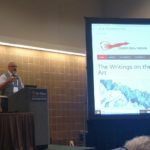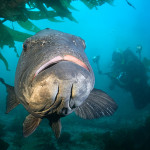
 On December 26th 2004, a 9.0 earthquake struck off northern Sumatra in Indonesia. This triggered a massive tsunami that affected Indonesia, India, Malaysia, Maldives, Sri Lanka, Thailand, and Africa. What was the lasting environmental impact of the tsunami and what might we expect from the recent Honshu Tsunami?
On December 26th 2004, a 9.0 earthquake struck off northern Sumatra in Indonesia. This triggered a massive tsunami that affected Indonesia, India, Malaysia, Maldives, Sri Lanka, Thailand, and Africa. What was the lasting environmental impact of the tsunami and what might we expect from the recent Honshu Tsunami?
The environmental impacts of tsunami can be broken down in to sixt major categories. Examples are given from the 2004 tsunami.
- Solid Waste, Disaster Debris, and Sewage: The size of a tsunami disaster results in principalities being unable to adequately deal with the sheer magnitude of debris. This increases the likelihood that waste will be disposed of in an environmentally inappropriate manner (open dumping, air burning, dumping in new areas). Hazardous materials, sewage, and toxic substances may also be mixed with ordinary debris.
- Contamination of soil and water: This includes salinization of rivers, wells, lakes, and groundwater aquifers. Sewage may impact water supplies and impact natural aquatic systems. In the Maldives, one of the most significant impacts of the tsunami was on groundwater. Salt-water intrusion, leaking septic tanks and debris contaminated water wells quickly impacted the groundwater that lies just below the surface. Salination and debris contamination may also lower soil fertility.
- Loss of Infrastructure and Facilities: UNEP reported extensive damage to environmental infrastructure, buildings and industrial sites. These include water and sanitation systems, solid waste disposal sites, and waste treatment centers. Oil storage facilities released oil and wastes into the environment which subsequently was not handled properly during clean-up.
- Loss of Natural Ecosystems: Coral reefs, mangroves, coastal areas, wetlands, agricultural fields and forests, and aquaculture areas can be badly damaged. Indonesia’s State Ministry of National Development Planning’s damage assessment estimated that 20% of sea grass beds, 30% of coral reefs, and 25-35% of wetlands, and 50% of sandy beaches of the west coast, have been damaged. In some local areas, 90% damage was reported to mangroves and coastal forests. In Thailand, 15 to 20% of the coral reefs were affected by the tsunami primarily due to siltation and sand infiltration. In the Nicobar Islands 51-100% of mangrove systems, 41-100% of coral reefs, and 6.5-27% of forest ecosystems were damaged. Mangrove systems near river mouths and channels appear particularly susceptible to loss due to heightened flow concentrated at river mouths and inundation of mangrove forests through river channels. Of course, the disappearance and relocation of beaches was also common.
- Nutrification of Coastal Waters: Material can be transported from land back to sea. This material can be heavy in nutrients and trace elements that lead to phytoplankton blooms and increases in populations of secondary consumers. With extreme nutrification, hypoxic conditions may be possible.
- Impact to Biological Communities and Species Due to Factors Above: Inside forests, heavy deposition of sediments on the forest floor may lead changes in the species composition of the organism living on or in the soil. One study suggests mangroves forests were slower to recover. Four years after the tsunami, intertidal and offshore communities appear to be recovered with similar species and number of individuals. However, 1-2 years afterwards a study of non-vegetated area, i.e. sand and mud flats, displayed a considerable reduction in both biodiversity and abundances of species. The rapid recovery of these systems reflects that they are naturally highly variable. In a species of heart urchin some individuals survived the tsunami, but overall juveniles dominated the population. The Nicobar Scrub Fowl, listed as vulnerable on the IUCN Redlist, dwindled from 2,318-4,056 to 395-790 breeding pairs after the tsunami, a decline of 70%. The tsunami also adversely influenced Nicobar Scrub Fowl nest-sites because of loss of suitable habitat. After the tsunami, Long-Tailed Macaques displayed fewer numbers near the coast. Juveniles were also more prevalent in the population. It is hypothesized this reflects the destruction of coastal fruit trees used by the monkeys. Freshwater ponds and peat swamps are also heavily impacted due to salinization. After the tsunami, many impacted ponds and swamps showed no sign to returning to their original species composition.
Although macabre, wildlife may fare better after a tsunami if the human population is greatly reduced. This is particularly true of fisheries.
More than 13,000 fishermen were killed and another 5,000 evacuated in Sri Lanka alone, with 80% of the fishing fleet lost or severely damaged. On the Thai coast, according to the UN Food and Agriculture Organization, 4,500 fishing vessels were smashed, jeopardizing the livelihoods of 120,000 people in fishing villages there.
M. Sanjayan of The Nature Conservancy in Arlington, Virginia, told ScienceInsiderthat the biggest impact on wildlife would be on shorebirds nesting on small islands throughout the Pacific, rather than on the Japanese mainland. Indeed, the majority of wildlife-related news of the tsunami has come from small Pacific islands such as those in the Midway Atoll National Wildlife Refuge…The US Fish and Wildlife Service is nowestimating that the Midway Atoll National Wildlife Refuge sustained losses of that more than 110,000 Laysan Albatross chicks – representing approximately 22% of chicks born this year – along with an estimated two thousand adults. In addition, thosands of Bonin petrels were buried alive, and thousands of fish were washed ashore where they suffocated on Eastern Island.
Sources:
- http://www.gdrc.org/uem/disasters/disenvi/tsunami.html
- http://www.project-syndicate.org/commentary/jernelov5/English
- http://www.unep.org/tsunami/reports/tsunami_indonesia_layout.pdf
- Srinivas, H., & Nakagawa, Y. (2008). Environmental implications for disaster preparedness: Lessons Learnt from the Indian Ocean Tsunami Journal of Environmental Management, 89 (1), 4-13 DOI: 10.1016/j.jenvman.2007.01.054
- Szczuciński, W., Niedzielski, P., Rachlewicz, G., Sobczyński, T., Zioła, A., Kowalski, A., Lorenc, S., & Siepak, J. (2005). Contamination of tsunami sediments in a coastal zone inundated by the 26 December 2004 tsunami in Thailand Environmental Geology, 49 (2), 321-331 DOI: 10.1007/s00254-005-0094-z
- http://www.ias.ac.in/currsci/jul102005/195.pdf
- http://www.cabdirect.org/abstracts/20093094216.html
- http://www.cabdirect.org/abstracts/20093094212.html
- Sivakumar, K. (2009). Impact of the 2004 tsunami on the Vulnerable Nicobar megapode Megapodius nicobariensis Oryx, 44 (01) DOI: 10.1017/S0030605309990810
- Whanpetch, N., Nakaoka, M., Mukai, H., Suzuki, T., Nojima, S., Kawai, T., & Aryuthaka, C. (2010). Temporal changes in benthic communities of seagrass beds impacted by a tsunami in the Andaman Sea, Thailand Estuarine, Coastal and Shelf Science, 87 (2), 246-252 DOI: 10.1016/j.ecss.2010.01.001
- http://www.italian-journal-of-mammalogy.it/article/view/4484/pdf
- http://rmbr.nus.edu.sg/rbz/biblio/58/58rbz329-348.pdf






i dont understand this we need more information what was affected what happends to sea animals how did the people react